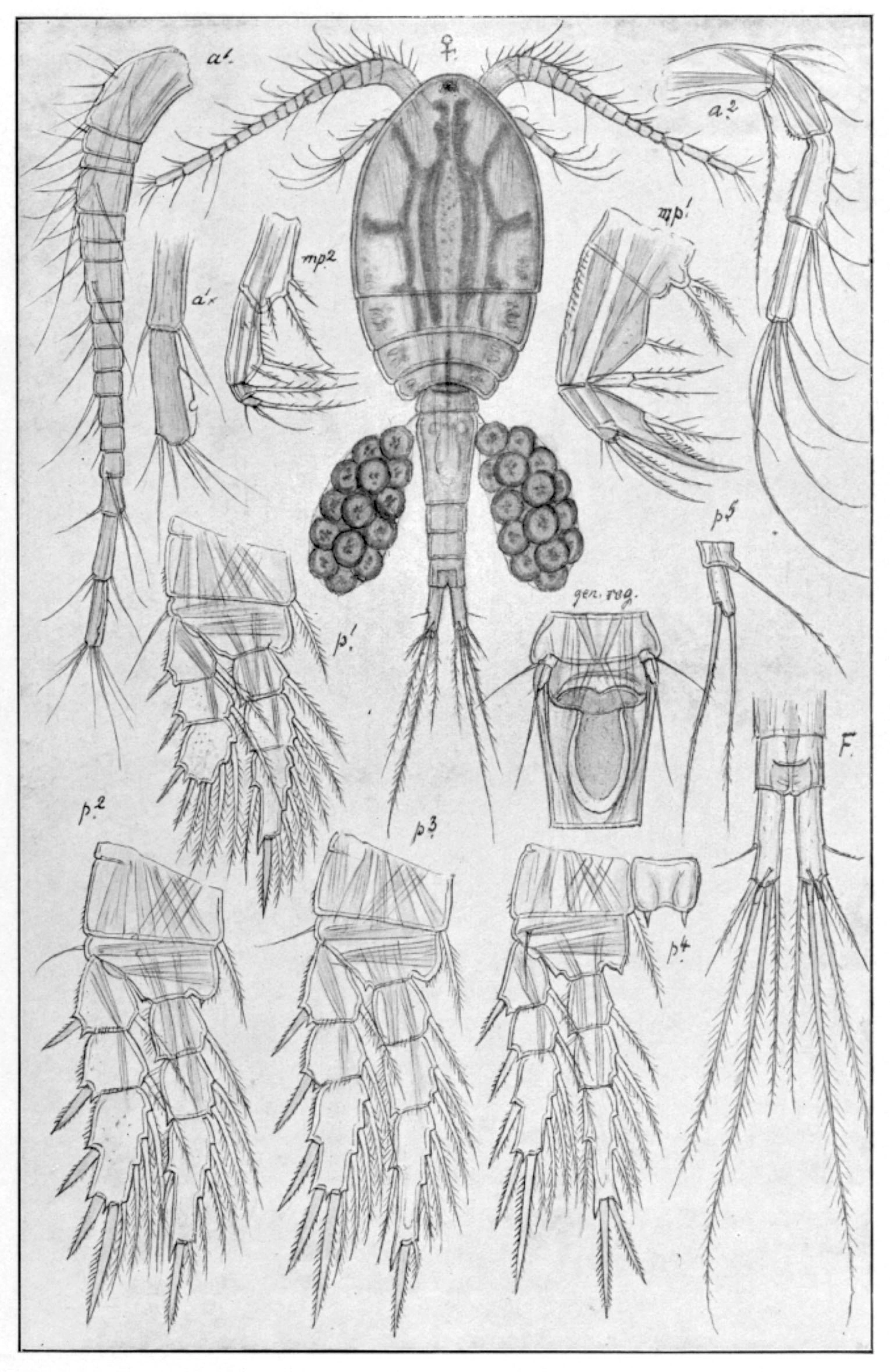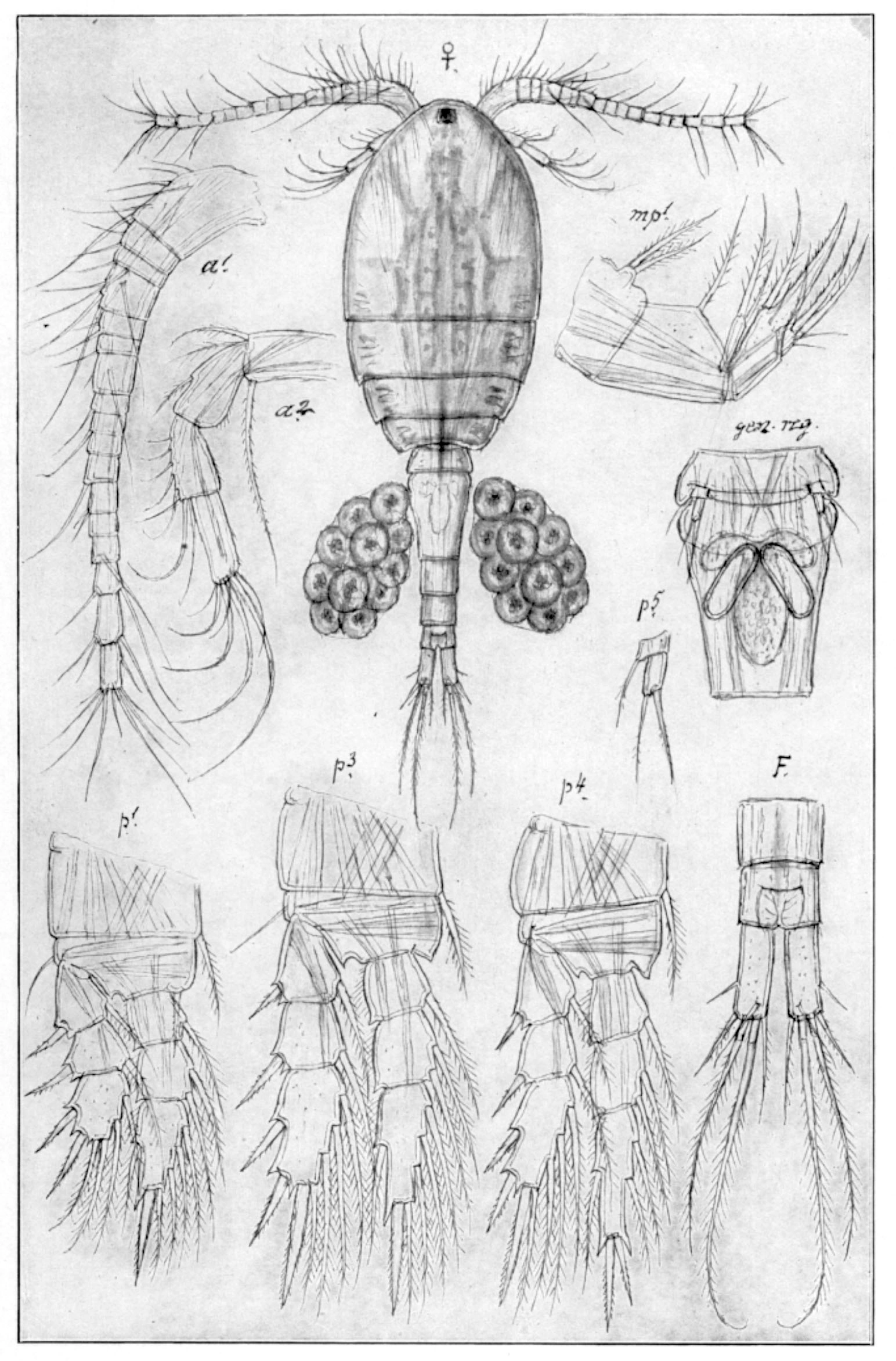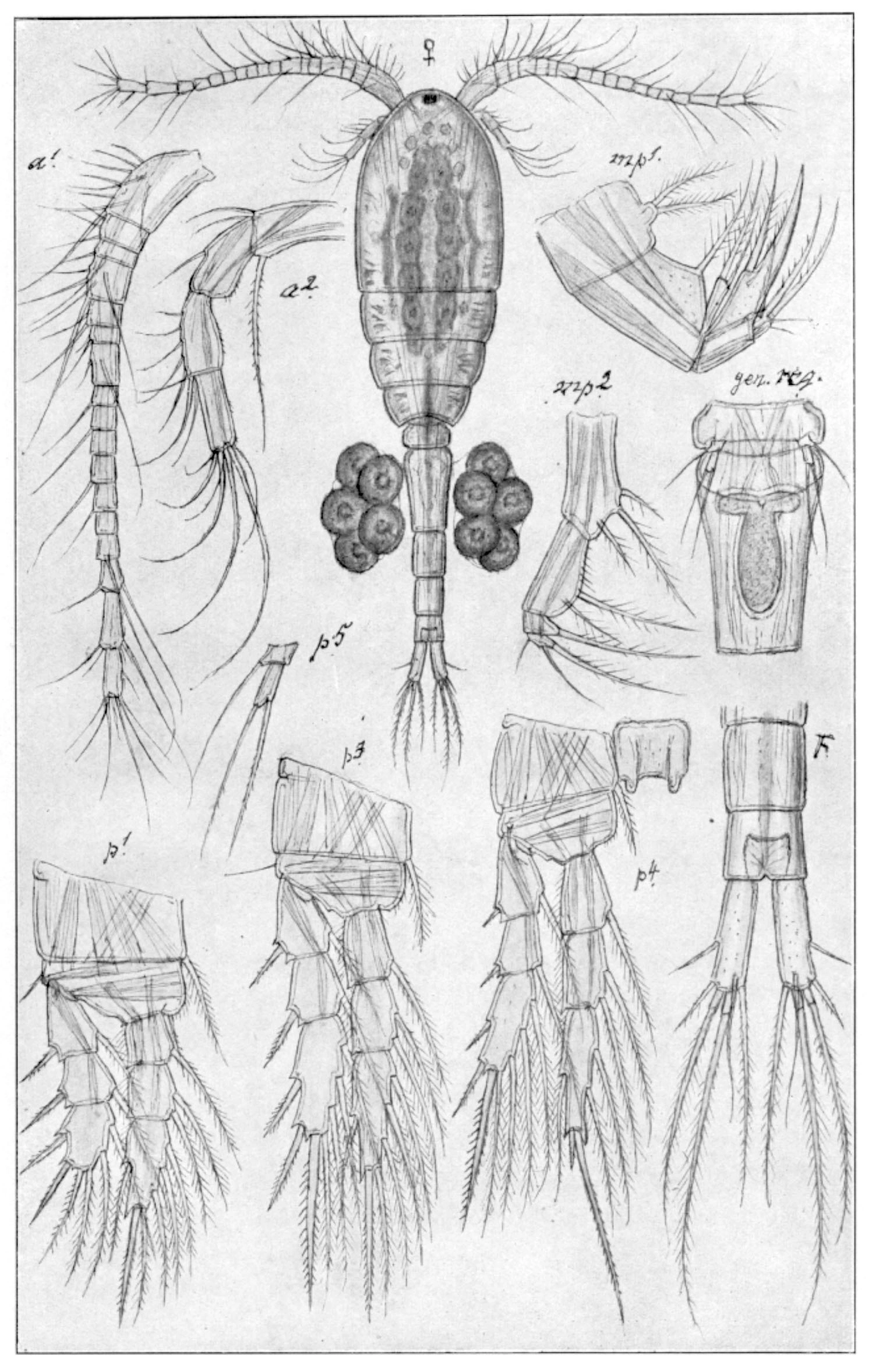Mesocyclops leuckarti
Mesocyclops leuckarti is a common copepod which most often occur in relatively nutrient rich ditches and small pools. However, it may also occur in larger waterbodies where it may live both in the pelagic and in the littoral zone.
Key characteristics
Mesocyclops leuckarti (female)
Mesocyclops leuckarti and Thermocyclops sp. is easily distinguished from other cyclopoid copepods by the last pair of legs (P5). The antennae consist of 17 segments and the seta on the outer edge of the tail is attached near the middle. M. leuckarti is distinguished from T. oithonoides and T. crassus by the length of the lateral seta of the furca which is comparatively longer and about half as long as the inner seta. To separate it from T. dybowskii the most secure criteria would be to use the setae of P5 which are longer and more slender in M. leuckarti than in T. dybowskii. The colour is generally pale yellow, with a more or less distinct bluish green tinge.
Female: Length 0.9–1.5 mm
Male: Length 0.7–1.0 mm
Ecology and distribution
M. leuckarti is a plankton/littoral species which is found in about 20 % of the localities and occurs in all parts of the country, being most common below 500 m a.s.l. It is never found in the alpine zone (>1000 m a.s.l.). It is found in all types of water bodies and occurs with highest frequency in both ditches/small pools and large lakes. It has a wide tolerance to pH (4.2–8.6). A high level of electrolytes seems to favour the species which occasionally occurs in lakes with conductivity less than <1.5 mS/m.
| Vitenskapelig navn | < 4,5 | 4,5 - 4,9 | 5,0 - 5,4 | 5,5 - 5,9 | 6,0 - 6,4 | 6,5 - 7,0 | 7,0 - 7,4 | > 7,5 |
|---|---|---|---|---|---|---|---|---|
| 22,6 | 16,8 | 17,3 | 24,2 | 25,2 | 15,1 | 14,1 | 39,3 |
| Vitenskapelig navn | < 1,0 | 1,0 - 1,4 | 1,5 - 1,9 | 2,0 - 2,9 | 3,0 - 3,9 | 4,0 - 4,9 | 5,0 - 6,9 | 7,0 - 9,9 | > 10,0 |
|---|---|---|---|---|---|---|---|---|---|
| 2,8 | 8,9 | 23,5 | 26,8 | 12,8 | 18,6 | 23,8 | 19 | 39,4 |
| Vitenskapelig navn | < 0,01 | 0,01 - 0,09 | 0,1 - 0,9 | 1,0 - 9,9 | 10,0 - 99 | 100 - 999 | > 1000 |
|---|---|---|---|---|---|---|---|
| 0 | 28,6 | 20,6 | 23,5 | 16,6 | 18,9 | 19,4 |
| Vitenskapelig navn | < 100 | 100-299 | 300-499 | 500-699 | 700-999 | >1000 |
|---|---|---|---|---|---|---|
| 16,2 | 38,1 | 22,3 | 12,1 | 8,5 | 0,5 |
Look alikes
Thermocyclops oithonoides, T. crassus and T. dybowskii



